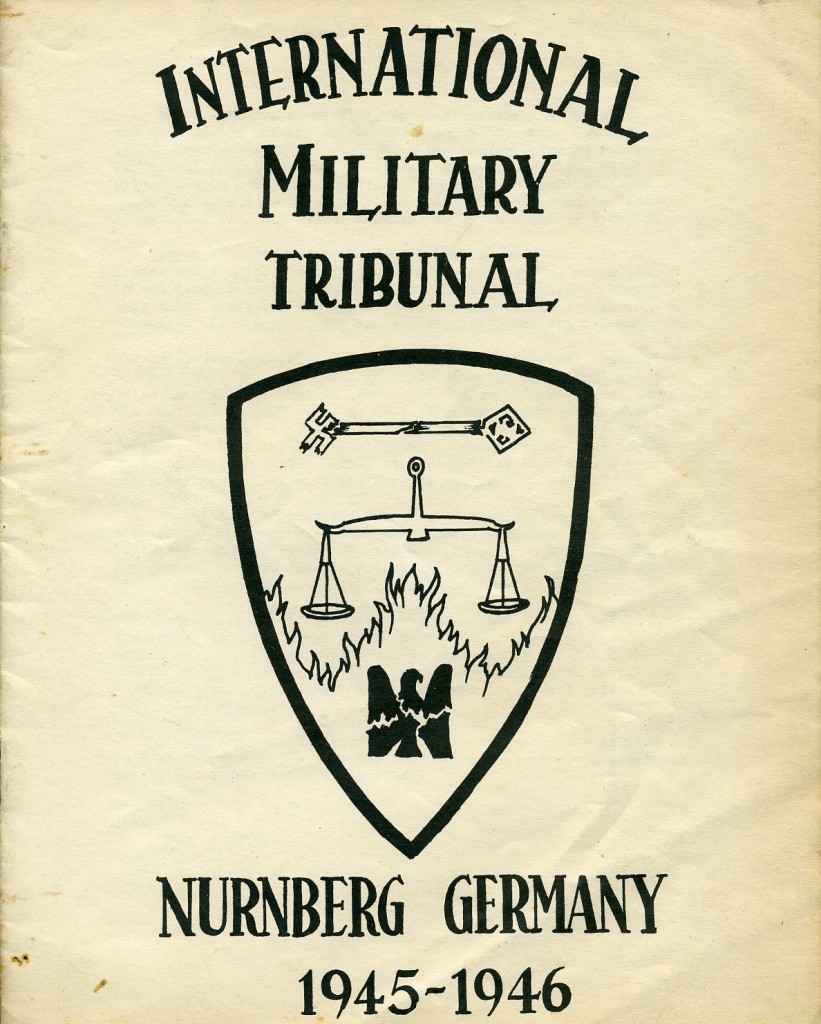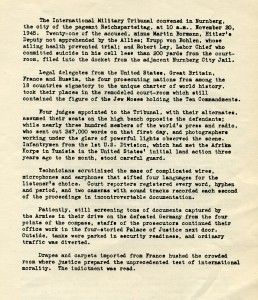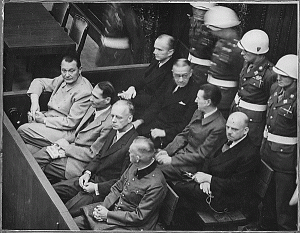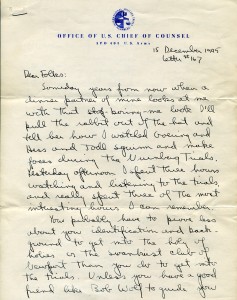Posts Tagged ‘Nuremberg’


On 18 October 1942, the Führer himself issued the Kommandobefehl, or Commando Order. Based on previous successes of Commando-spearheaded surprise attacks such as the Raid at St. Nazaire, Hitler realized the enormous potential of British Special Forces in particular (though the ordered applied to all Allied belligerents) to cause massive disruption to German military superiority in Europe. Even with the Dieppe Raid proving a total disaster, its failure was not caused by a lack of competence of the soldiers on the ground, but more so by the inability to complete pre-invasion bombardment and other factors out of the control of those involved.
The order was justified by the Germans through rumors–the veracity of which remains unclear–that British commandos or “sabotage forces” had on more than one occasion tied up German prisoners of war, which itself went against the Geneva Conventions, and therefore legitimized the radical Commando Order. Regardless of the supposed rationality behind the order, it was treated as top secret and only to be seen by the highest command.
What the order called for went completely against the Conventions regarding the handling of prisoners of war. Hitler’s decree ordered than any commando encountered by German forces was to be turned over immediately to the Gestapo or SD, whether he surrendered or not, and regardless of if he was in uniform or plain clothes (typically, those in plain clothes were considered spies and were therefore not protected by the Conventions), or else-wise to be completely “annihilated” in battle Once turned over to the German intelligence and police units, these “prisoners” were generally sent to camps for execution. Any German officers who did not obey said order would be tried by military courts. The Nuremberg Trials would find this order, not surprisingly, a war crime and many of those who carried it out were convicted and sentenced to death.
Coming soon to The National WWII Museum, Guests of the Third Reich: American POWs in Europe. On display November 11, 2012 – July 7, 2013.
This post by Curator Meg Roussel



Special Exhibit – Deadly Medicine: Creating the Master Race
On Display July 25, 2012 – October 15, 2012
From 1933 to 1945, Nazi Germany carried out a campaign to “cleanse” German society of people viewed as biological threats to the nation’s “health.” Enlisting the help of physicians and medically trained geneticists, psychiatrists and anthropologists, the Nazis developed racial health policies that started with the mass sterilization of “hereditarily diseased” persons and ended with the near annihilation of European Jewry. Deadly Medicine: Creating the Master Race traces this history from the early 20th-century international eugenics movement to the Nazi regime’s “science of race.” It also challenges viewers to reflect on the present-day interest in genetic manipulation that promotes the possibility of human perfection.
This exhibition was produced by The United States Holocaust Memorial Museum and sponsored locally by the Tulane School of Medicine.
Schedule of Events
All events are free and open to the public.
Wednesday, August 1, 2012
5:00 pm reception/6:00 pm presentation
The National WWII Museum – Louisiana Memorial Pavilion
Public Opening Reception & Meet the Curator: Dr Susan Bachrach
Join the curator of Deadly Medicine: Creating the Master Race, Susan Bachrach from the United States Holocaust Memorial Museum, as she discusses the creation of this thought-provoking exhibition and the inspiration behind it. For more information, call 504-528-1944 x 229.
Register for this event.
Wednesday, August 8, 2012
6:30 pm – 8:00 pm
The National WWII Museum – Stage Door Canteen
Book Discussion – Sophie’s Choice
The plot ultimately centers around a tragic decision which Sophie was forced to make upon entering the concentration camp. Join us for a discussion on this moving book. For more information, call 504-528-1944 x 229.
Wednesday, August 15, 2012
7:00 pm – 9:00 pm
The National WWII Museum – Stage Door Canteen
Film Screening – Sophie’s Choice
This film tells the story of a Polish immigrant, Sophie, and her tempestuous lover who share a boarding house with a young writer in Brooklyn. The film stars Meryl Streep, Kevin Kline and Peter MacNicol. For more information, call 504-528-1944 x 229.
Thursday, August 23, 2012
3:00 pm – 6:00 pm
The National WWII Museum – The Joe W. and D.D. Brown Foundation Special Exhibit Gallery
Educator Open House
Area teachers are invited to view the special exhibition. Educational materials relating to the exhibit will be available and museum education staff will be on hand to answer questions. For more information, call 504-528-1944 x 229. Pre-registration is requested.
Monday, August 27, 2012
5:00 pm
Tulane School of Medicine – Auditorium, 1430 Tulane Avenue
Justifying the Unthinkable: The ‘Ethics’ of Nazi Medical Experimentation by Arthur Caplan
The field of bioethics has either remained silent in the face of Nazi crimes or accepted the myths that Nazi biomedicine was inept, mad, or coerced. The fact is that many of those who committed the crimes of the Holocaust were competent physicians and scientists who acted from strong moral convictions. The puzzle of how it came to be that physicians and scientists who caused so much suffering and death did so in the belief that they were morally right is the focus of this presentation. For more information, call 504-528-1944 x 229.
Register for this event.
Thursday, September 6, 2012
5:00 pm reception/6:00 pm presentation/7:00 pm book signing
The National WWII Museum – Louisiana Memorial Pavilion
Ethics in Medicine and Research: Lessons from Dr. Mengele’s Lab by Eva Kor
Meet this survivor of Nazi medical experiments and hear her remarkable story. For more information, call 504-528-1944 x 229.
Register for this event.
Thursday, September 13, 2012
6:30 pm
Tulane Uptown Campus – Dixon Hall
The Ethics of Using Medical Data from Nazi Experiments by Baruch Cohen
Following World War II, leading Nazi doctors were brought to justice at Nuremberg after revealing evidence of sadistic human experiments at concentration camps. Since the Nuremberg trials, our society has had to confront the reality that the Nazi doctors were guilty of premeditated murder masqueraded as research. But what about the continued use of the Nazi doctors’ medical research? Is it ever appropriate to use data as morally repugnant as that which was extracted from victims of Nazism? Is so, under what circumstances? Civil Trial Attorney Baruch Cohen presents from a Jewish ethical perspective. For more information, call 504-528-1944 x 229.
Thursday, September 20, 2012
7:00 pm
Newcomb College – Woldenberg Art Center, Freeman Auditorium
Lecture – “The Thief of the Future: The Holocaust – Women, Reproductive Science, Eugenics and the State”
by Laurie Zoloth, Ph.D.
It was not only the lives of Jewish women that were the target of Nazi genocide, it was the very thought of a Jewish future, carried in the bodies of Jewish women. Throughout the campaign of extermination, a second campaign was conducted to prevent reproduction; women bore the brunt of this campaign. The Nazi “experiments” carried out in the name of reproductive science were done by the most prestigious physicians in Germany, as a part of a larger vision of a future in which eugenics shaped the human future. Thus began an era in which the control of the human future was the most critical battleground of all. The 2012 Daspit Women in Science Lecture is presented by Professor Laurie Zoloth, Director of The Brady Program in Ethics and Public Life at Northwestern University. For more information, call 504-865-5422 or email cheaney@tulane.edu.
Wednesday, October 10, 2012
12:00 pm – 1:00 pm
The National WWII Museum – Orientation Center
Lagniappe Lecture – Unit 731 by Walt Burgoyne
In August of 1945, the Soviet Union invaded Japanese Manchukuo. At Japanese compound Unit 731, thousands of rats were released from their cages. They carried millions of bubonic plague-infested fleas to the nearby cities of Harbin and Pingfan. The humans intentionally exposed to plague in camp had already been slaughtered by the Japanese; and the compound burned, to erase damning evidence. Learn about little-known Unit 731, and the unbelievable atrocities committed there, from Education Programs Coordinator Walt Burgoyne. For more information, call 504-528-1944 x 229.
Thursday, October 11, 2012
6:00 pm – 7:30 pm
Panel Discussion – Deadly Medicine’s Influence on Contemporary Public Health Policy
The National WWII Museum – Stage Door Canteen
Looking at the era of “Deadly Medicine” from a public health perspective, what have we learned from it? How do modern medical leaders influence policy by learning from the past? Join local and state medical leaders as they discuss how current medical research has been influenced by the past. Panelists include Dr. Benjamin Sachs, Dean Tulane School of Medicine; Dr. Karen DeSalvo, Commissioner of Public Health, City of New Orleans; Dr. Bruce Greenstein, Secretary Department of Health and Hospitals, State of Louisiana; Dr. Laura Levy, Vice President for Research, Immunology and Microbiology, Tulane University; and Dr Samir El-Dahr, Vice President for Research, Pediatric Nephrology, Tulane University. Dr Guenter Bischof, Director Center Austria, University of New Orleans will introduce.
Register for this event.
Note that some events will be held at off-site locations. Programs subject to change.



The “Final Solution” to the Jewish question was decided in the Berlin suburb of Wannsee, in a stately and picturesque building alongside a garden and lake, on January 20, 1942. It is against this incongruous backdrop that history’s most infamous crime, the mass murder of an entire people, was decided upon in bland and bureaucratic proceedings and language. Indeed, the architect of this extermination, Adolf Hitler, was not even present at the meeting, and did not affix his signature of approval to the Wannsee Protocol, the document which is the closest written master plan we possess for the Holocaust.
The central mystery to all queries concerning Adolf Hitler and the Holocaust is, where did the hatred come from? And how could this man gain power in the most advanced nation in Europe, and proceed to implement this monstrous slaughter? Many profiles and much ink has been spilled in the effort to explain and understand how the Final Solution came to pass. Many explanations focus upon Hitler’s inner world and some hidden aberration, such as misplaced anger and blame at his Jewish doctor for failing to cure his mother’s cancer, vague speculations that Hitler’s grandmother had conceived out of wedlock by a married wealthy Jewish employer, claims that Hitler’s rage stemmed from repressed homosexuality, or even that his youthful anger with the Catholic church mutated into an intense hatred of the Jews as persecutors.
Those who seek rational explanation of the Holocaust and Adolf Hitler as historical phenomena cannot find satisfactory answers by the usual means of rational inquiry. But the proper place to seek a rational understanding of this most irrational and horrific event is inside of Adolf Hitler: not in his emotions, but in his mind and the ideas he believed in. Hitler believed in and acted upon a worldview which, however unsound in factual reality, had a horrible logic. It is a testament to the essential inhumanity of himself and his followers that they believed they were acting from motives of beautifying the world.
(more…)





Gift of Rosemary Deutsche, The National WWII Museum Inc., 2003.443.335
Justice Given for Victims of Nazi War Crimes
The Nuremberg Trials began in November 1945 and went on for nearly a year. A program of sorts from the Museum’s collection describes in detail the proceedings at the trial and even includes a scale map of the courtroom’s layout. Representing the United States, the French Republic, the United Kingdom, and the USSR were four chief officials prosecuting some of the most infamous German leaders including Hermann Göring, Rudolf Hess, Hans Frank, Joachim von Ribbentrop, and Wilhelm Frick.

Göring, Hess, von Ribbentrop, and Keitel under guard during the trial. Courtesy of the National Archives.

A letter written by Pvt. Herman Obermayer who traveled to Nuremberg (then known as Nurnberg) to witness the historic events describes the extent of the strict security throughout the city during the trials:
“Dear Folks, Someday years from now when a dinner partner of mine looks at me with that stop-boring-me look I’ll pull the rabbit out of the hat and tell her how I watched Goering and Hess and Jodl squirm and make faces during the Nurnberg Trials. Yesterday afternoon I spent three hours watching and listening to the trials, and really spent three of the most interesting hours I can remember.
You probably have to prove less about your identification and background to get into the Holy of Holies or the swankiest club of Newport than you do to get into the trials. Unless you have a friend like Bob Wolf to guide you through and around the security system the ordinary human being who wanted to see the trials would leave Nurnberg more frustrated than a Midwest businessman in Washington. The area for a block or two around the Palace of Justice is restricted which means that no civilian or soldier without proper identification can enter the area. There are guards at the gate to the Palace of Justice grounds and unless you have a pass stating your exact business you go on to a security office where you are checked and interrogated, etc…You cannot wear an overcoat or hat into the courtroom or even carry it with you as they are afraid you might be able to conceal a grenade, weapon, etc. “
[Gift of Herman Obermayer, The National WWII Museum Inc., 2004.344]
This entry by The National WWII Museum Curator Meg Roussel








